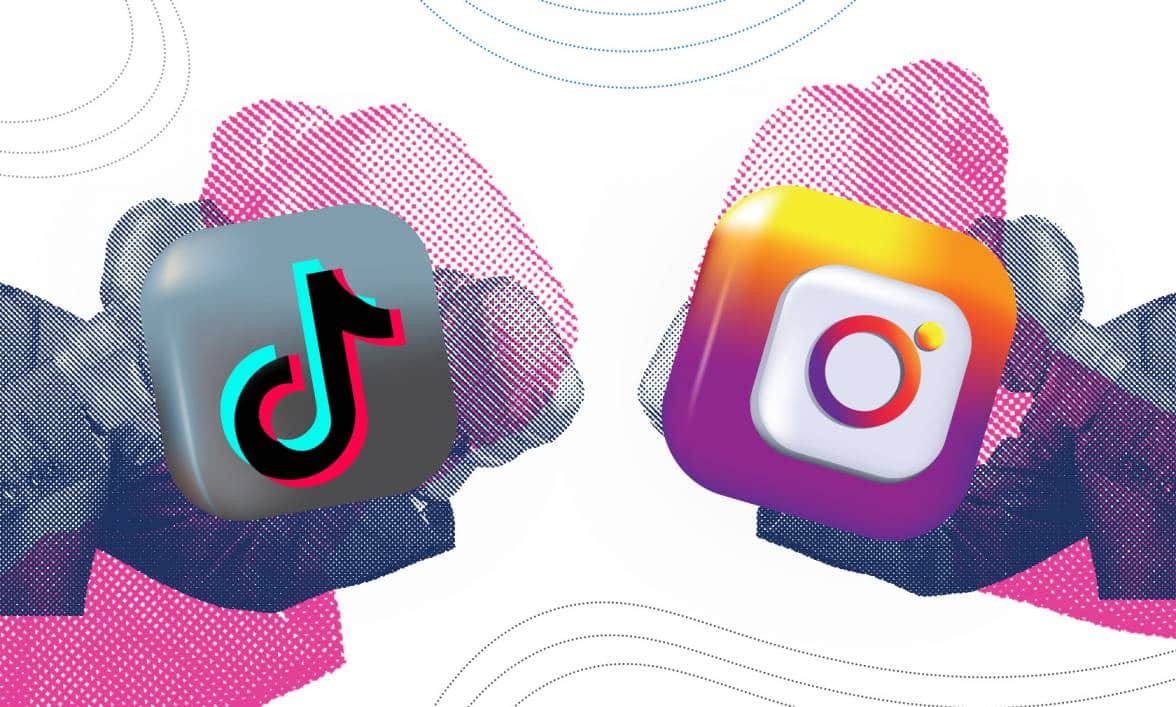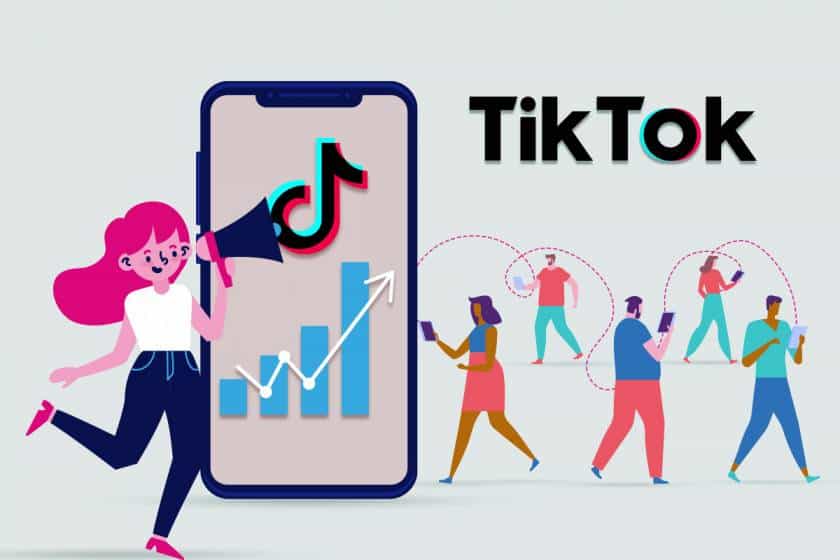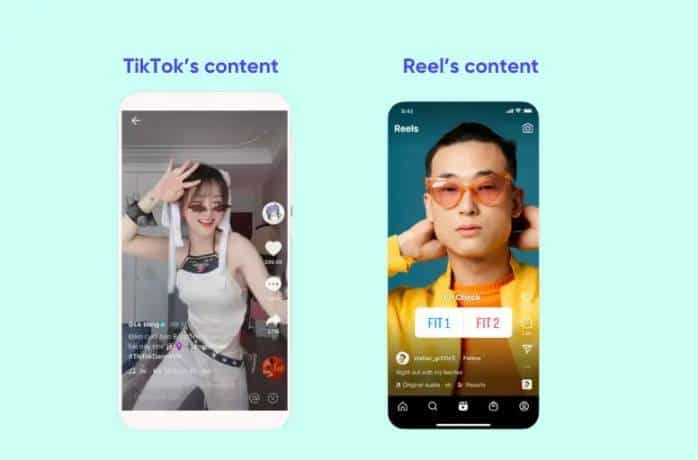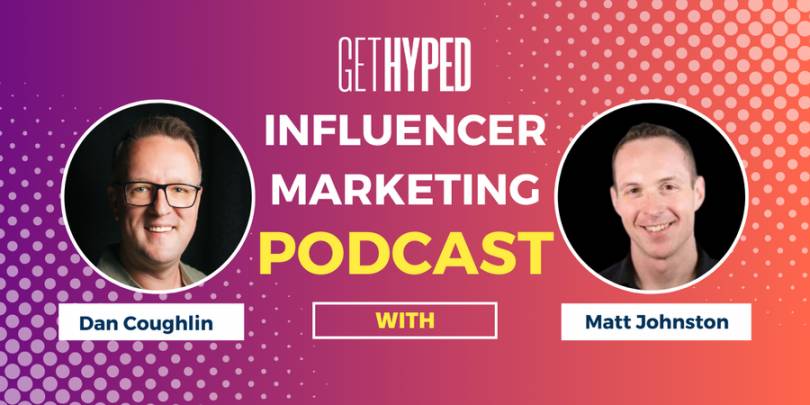
You don’t need a million followers to make an impact. You just need the right people to care.
In 2025, engagement is the metric that matters. Brands and creators aren’t chasing vanity numbers anymore — they’re chasing interaction, visibility, and traction.
That’s where TikTok and Instagram dominate the conversation.
They’re the two most powerful platforms for building an audience, tapping influencers, moving product, and staying relevant. But they work very differently.
This article offers an in-depth comparison of how engagement plays out on both platforms. We’ll look at performance benchmarks, algorithm behavior, and short-form video content trends across TikTok and Instagram — and how to understand the significant difference between the platforms and which one deserves your focus.
If your content resonates, you will tap into the benefits of social commerce and learn how to integrate those learnings into your marketing opportunities.
Table of Contents
What Counts as Engagement on Each Platform?

Before comparing TikTok and Instagram, it helps to understand exactly what “engagement” means — and what it doesn’t.
Likes are the most obvious metric, but they’re also the least useful. Engagement goes deeper. On both platforms, it includes comments, shares, saves, video completions, sticker taps, link clicks, and replies. Anything that signals real interest counts. These can be used to guide influencer marketing campaigns, as well.
Each platform’s emphasis has its own priorities while demanding engaging content. TikTok leans into watch time, rewatches, and shares. The algorithm favors content that keeps people watching — and coming back. Instagram remains more nuanced. Saves and shares tend to carry more weight, especially for feed posts and carousels. Instagram Reels borrow some of TikTok’s logic but still reflect Instagram’s slower pace.
If you’re trying to grow, don’t just chase the highest numbers through content creation. Focus on target audience engagement metrics that reflect value and intent.
Comments and shares show someone cared enough to respond or pass it on. Saves signal a reason to return. These are the actions that push your content further.
Engagement isn’t a popularity contest. It reflects how much your content matters to the person on the other side of the screen.
TikTok Engagement Overview

TikTok still leads the pack in raw engagement, but the landscape is shifting.
In 2024, the platform’s average engagement rate dropped to 4.64%, down from 5.77% the year before, according to Statista. The numbers with TikTok account users are still strong — but they’re a reminder that the platform is getting more competitive.
As more creators flood the feed, standing out takes more than showing up, especially with younger audiences.
TikTok’s algorithm doesn’t care about your follower count. It cares about performance. Every TikTok video gets a test run with a small audience. If it gets watched through, rewatched, shared, or commented on, TikTok widens the reach.
That’s why new accounts can go viral — and why stale content from big accounts sinks fast — no matter the level of TikTok influencer.
Content that performs tends to follow a formula that aligns with user interests. Sharp, short videos. A strong hook within the first three seconds. Fast edits, trend references, or punchy storytelling.
TikTok rewards clarity and momentum — and user generated content tends to perform well. If your video gets a TikTok user to pause — and stay — it gets pushed further.
Instagram Engagement Overview

While engagement on Instagram has seen a gradual decline, it remains a powerful platform for relationship-building and long-term brand affinity.
As of 2024, the median engagement rate across all account sizes is 0.43%, according to social media data company Rival IQ. That’s a 16% drop from the previous year. Carousels lead slightly with an average rate of 0.55%, followed by Instagram Reels at 0.50%, and static image posts at 0.45%, per Socialinsider.
Instagram’s algorithm behaves differently from TikTok’s. Instead of prioritizing new creators or unknown content, it tends to reward consistency and follower relationships. That means Instagram users often see better results from audience retention strategies than from one-off viral hits.
Engagement on Instagram also skews higher for content that keeps users interacting — like carousels that invite swiping, or Reels that hold attention just long enough to loop.
As for what works: high-quality visuals still matter, but authenticity has overtaken polish. Reels that feel real and relatable tend to land better than overly edited clips. Carousels are most effective when used to tell a story or break something down step by step.
While static photos are slipping in performance, Instagram influencers find that strong captions paired with eye-catching imagery still drives meaningful interaction.
Instagram offers a platform for a variety of content styles, but the results aren’t a numbers game anymore. It’s about keeping people engaged across formats and nudging them to come back for more.
Head-to-Head: TikTok vs Instagram Engagement Rates
| Metric | TikTok | |
| Average Engagement Rate | 4.64% (2024) | 0.43% median (2024) |
| Short-Form Video | High visibility via For You Page | Lower reach, favors existing followers |
| Top Content Types | Trends, storytelling, fast edits | Carousels, authentic Reels |
| Algorithm Style | Interest-based, performance-driven | Follower-based, consistency-driven |
| Best Niches | Entertainment, creators, food | Fashion, beauty, fitness |
Engagement Rate Benchmarks
TikTok’s average engagement rate sits at 4.64%, per Statista. Instagram’s median engagement rate is significantly lower at 0.43%, according to Rival IQ.
The disparity reflects not just platform mechanics but also the level of content saturation. TikTok is still optimized for reach. Instagram is designed more for retention.
Instagram Reels vs TikToks
TikTok and Instagram Reels serve similar formats, but not similar results. TikToks are built for discovery.
Reels tend to stay within your existing follower base unless they catch a rare boost on the Explore Page. Engagement on Reels averages around 0.50%, while TikToks often exceed 4% when they hit the right signals.
The key difference? TikTok rewards immediate interaction — rewatches, shares, and watch time. Instagram rewards consistency over time.
Stories vs Lives
Instagram Stories remain a daily staple for audience retention, but they aren’t built for wide engagement. or user feeds.
Replies and reactions count, but Stories disappear in 24 hours and rarely reach broader audiences — unless you’re working with Stories ads. TikTok Lives are harder to stumble on, but they offer real-time depth and direct interaction for engaged followers.
Neither format is meant to drive growth — but both help sustain it.
Industry and Niche Differences
Engagement also varies by niche. Instagram performs better for polished lifestyle content — beauty, fitness, fashion. TikTok favors content with movement, energy, and personality. Entertainment, creators, and food brands often see better results there.
That said, both platforms are adapting and have interactive communities. We’re seeing fitness creators explode on TikTok and storytellers thrive on Instagram. The line is always shifting.
Algorithm Behavior, Content Discovery, and Visual Storytelling

The difference between TikTok and Instagram starts with how people find your content. TikTok is built for discovery. Instagram is built for familiarity.
How TikTok’s For You Page Drives Viral Engagement
TikTok’s For You page is the engine behind its high engagement. The algorithm tracks how users interact with every piece of content — how long they watch, whether they rewatch, pause, share, or comment.
Based on that data, it decides whether a video should reach 1,000 people or 10 million. The emphasis is on performance, not popularity. That’s why even small accounts can go viral with the right video.
How Instagram Prioritizes Content in Explore and Feed
Instagram still leans on who follows you. The main feed is designed to show posts from people users already know or Instagram ads.
The Explore page offers discovery opportunities, but it’s harder to break through. Even Reels tend to prioritize content from familiar creators over strangers — unless the video hits a clear trend or interaction spike.
The Impact of Consistency, Timing, and User Behavior
Consistency matters on both platforms, but in different ways. On Instagram, posting regularly and content visibility keeps you in front of your audience. The algorithm favors accounts that show up often and get consistent interaction.
With TikTok’s emphasis, consistency helps — but timing and quality matter more. A strong video posted at the right moment can outpace a week’s worth of average posts. TikTok responds quickly to audience behavior. Instagram takes its time.
The two platforms reward creators who learn what their audience demographics want and deliver authentic content without wasting their time. When utilized properly, there are massive marketing opportunities.
What This Means for Brands and Creators

Engagement is a metric that signals what works, where, and for whom. And when you line up TikTok and Instagram side by side, it becomes clear they aren’t interchangeable.
They serve different content, different goals, and different types of growth. And when you make real impact, you drive quality leads and conversions.
Platform Strengths and Weaknesses
TikTok is the platform for reach. It gives creators and brands a shot at massive exposure, even with no following.
The catch? Brands connect by moving fast, stay relevant, and adapt quickly. The content lifespan is short, and the pressure to stay fresh is constant.
Instagram plays the long game. It’s better for building relationships, nurturing a community, and selling over time. Engagement is lower, but it’s more targeted. If someone interacts with your content on Instagram, they’re more likely to come back — and buy.
Who Wins Where
Creators who thrive on trends, storytelling, and personality usually perform better on TikTok. That includes entertainers, educators, and bold niche creators who know how to hook an audience in three seconds or less.
A brand presence with strong visuals, clear messaging, and a consistent content cadence tends to see steadier returns on Instagram. Fashion, fitness, wellness, and beauty still lead here—but the door is open for anyone playing the long-term game.
Choosing the Right Strategy
You don’t have to pick a side. Some brands go all in on one platform. Others tailor content for both. If you’re aiming for fast growth, test on TikTok. If you’re focused on brand trust or conversions, anchor on Instagram. If you have the bandwidth, run both — but create differently for each.
The bottom line: let your content — and your audience — tell you where to focus.
Don’t Pick Sides. Pick Your Strategy.
TikTok and Instagram work in different ways. One moves fast and thrives on trends. The other rewards consistency and connection. It’s not about which one is better. It’s about knowing which one works for what you’re trying to build.
If your engagement feels off, it may not be the content. It may be the context.
Take a week. Look at your last 10 posts on each platform. Track what actually got people to engage — not just like. What made them comment? What got shared? What made them save it?
Look at how your content is performing across each channel. Look at how your audience is responding. Then decide where your time is best spent.
Ready to sharpen that strategy? At Get Hyped, we help our clients break down the numbers, sharpen their message, and create content that actually gets traction. Let’s make something worth watching.


